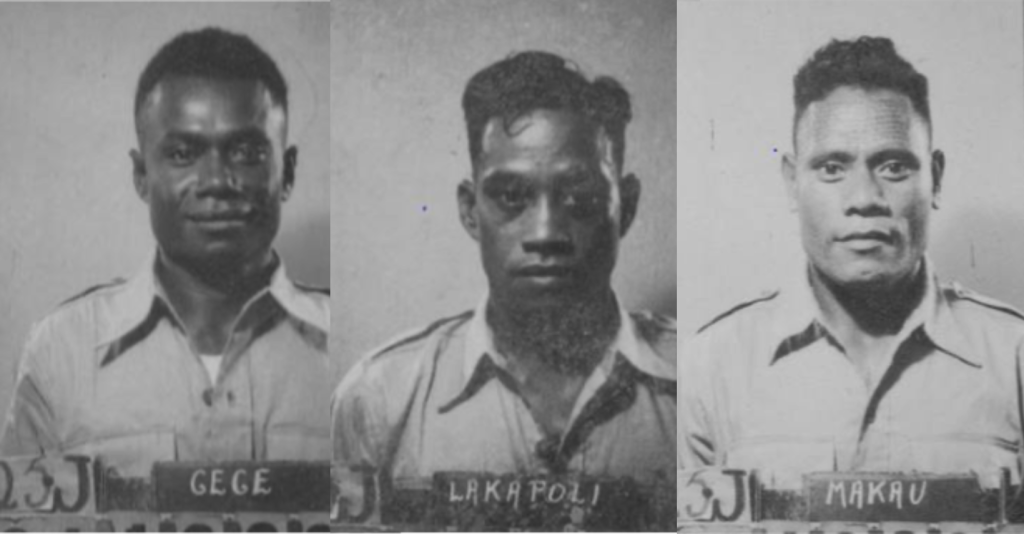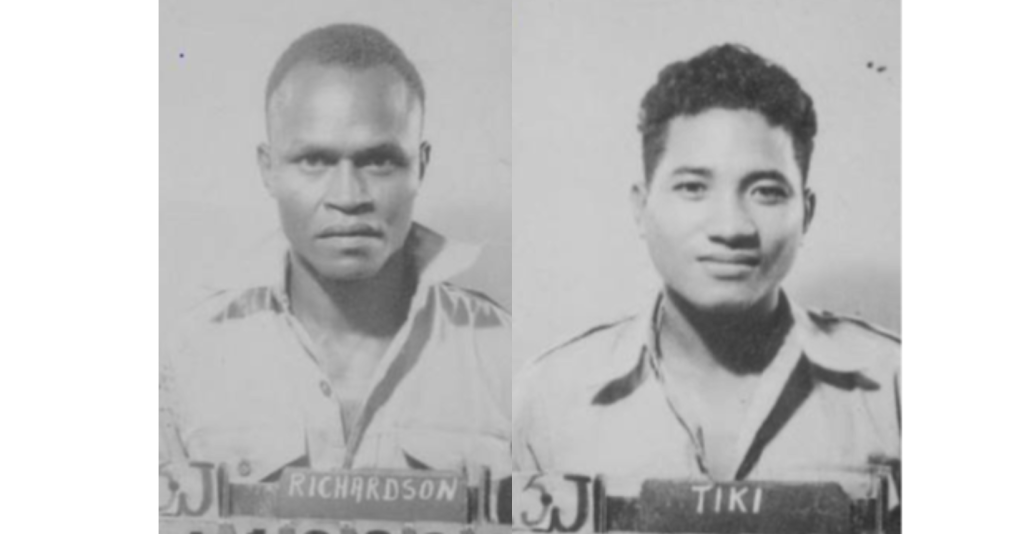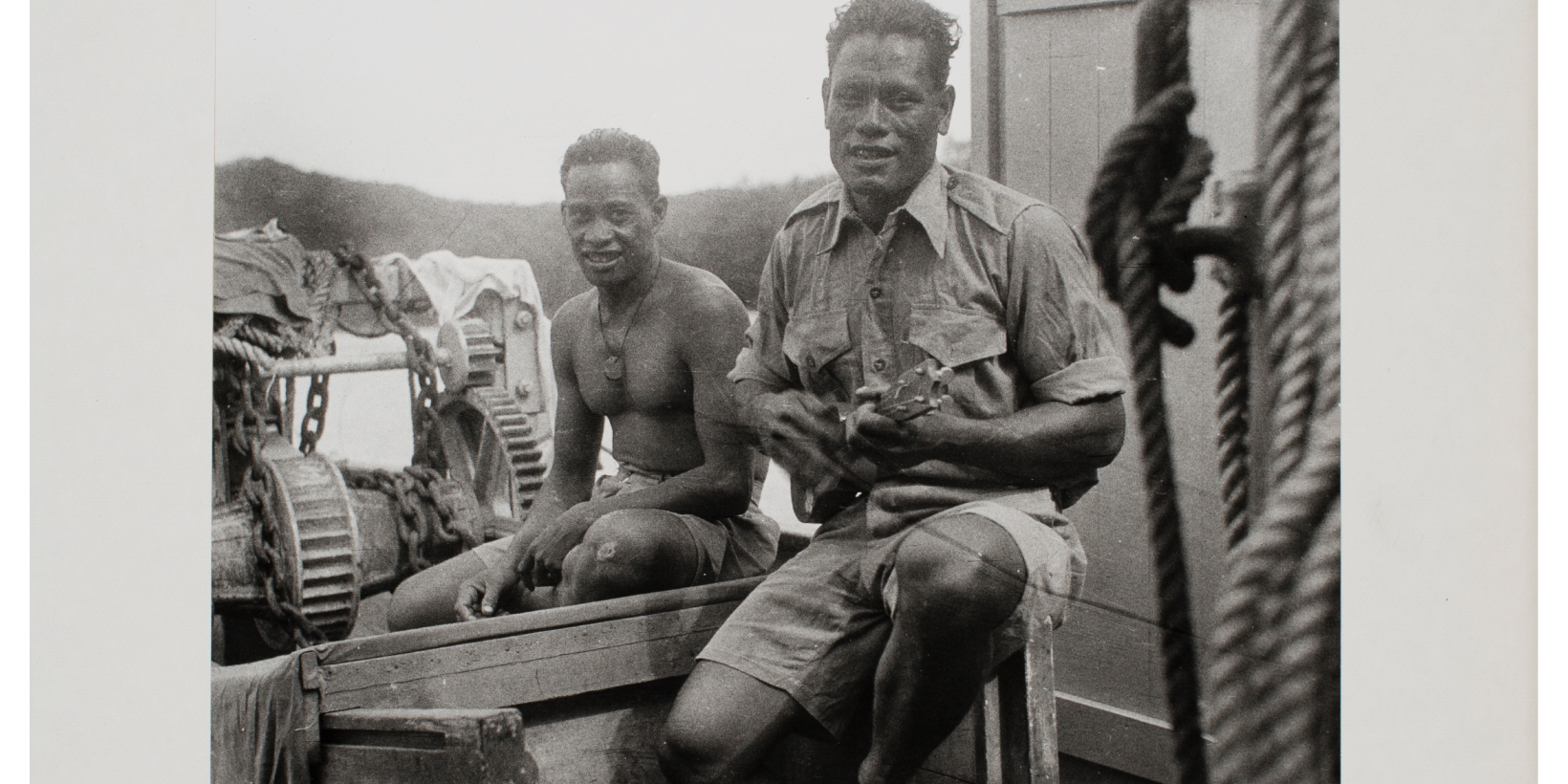When war came to Australia’s doorstep in 1942, a quiet group of Solomon Islanders found themselves deep in the bushland of Arnhem Land — armed, alert, and far from home.
They weren’t Coastwatchers, and they weren’t on Guadalcanal. These six men — all from different parts of the Protectorate — had been recruited into a shadowy unit of the Australian Army known as the Northern Territory Special Reconnaissance Unit (NTSRU).
We now know their names. But we don’t know what became of them.
That’s why I’m writing this — not just to share their story, but to ask for your help in finishing it.
Meet the Six
Each man enlisted into the Australian Army on the same day: 24 November 1941. Each one travelled from the Solomon Islands to Brisbane, where they joined a special force built to defend northern Australia against Japanese invasion.
We’ve pieced together what we can from Australian records:
- Private Tiki (born 1926) listed his birthplace as simply British Solomon Islands. His next of kin was Tenasan.
- Private Gege (born 1916) enlisted from Sasela, and listed Vona as next of kin.
- Private Tausia (born 1919) came from Takua, and named Selua as his kin.
- Private Papai Lakapoli (born 1917) enlisted from Sikaiana, a Polynesian outlier, and listed Teaiki.
- Private Kelauia Makau (born 1916) came from Paelo Island, and his next of kin was Moenaki.
- Private Edwin Richardson (born 1910) was from San Christofel (Makira). His kin was Kapunagana. He may be a son of the legendary figure Dick ‘Amerika’ Richardson, a Black American sailor who made his home in the Solomons decades before.


Five were discharged together on 31 August 1943, after two years in this unconventional unit. One — Richardson — was discharged a year earlier, in August 1942.
All were posted to what the army listed as “Special Force Solomon Islands” — a catch-all name for this unusual group operating inside Australia.
What Were They Doing in Arnhem Land?
At the time, northern Australia was virtually unguarded. Fearing a Japanese landing, the Australian military quietly formed the NTSRU — a reconnaissance and early warning force made up primarily of Aboriginal men under the command of Donald Thomson, an anthropologist turned Army officer. They trained in silent movement, camouflage, and observation.
The Solomon Islanders likely played a dual role: as trackers and scouts, but also as intermediaries. Their own cultural and linguistic skills, as well as their experience working with both colonial and Indigenous communities, made them ideal for this kind of work.
They lived in remote bush camps with the Aboriginal soldiers. They were part of a truly multiracial force — something that would have been all but unthinkable in the formal units of the time.
Why Does This Matter Now?
Because their story has been lost.
There is no mention of these men on Australian war memorials. No record of what happened to them after they returned to the Solomons. No public recognition of the fact that, for two years, they helped protect Australian soil.
At the Australian War Memorial, we are now working to change that.
We’re trying to find their descendants, hear their stories, and ensure their contributions are recorded in the public record — in both our countries.
Can You Help Us?
We’re calling out to communities across the Solomons — especially in Makira, Sikaiana, Paelo, and Malaita — to help reconnect these names with families.
Do you know anyone called Tenasan, Vona, Selua, Teaiki, Moenaki, or Kapunagana?
Have you ever heard stories of a relative who served in Australia during the war?
Do you have photographs, letters, or even memories passed down about this time?
Even the smallest details could help us honour their legacy.
Why This Story Deserves to Be Told
This isn’t just about history. It’s about recognising that Australia and Solomon Islands fought together — side by side, even in places far removed from the Pacific campaigns.
It’s about restoring visibility to men who were once essential, but have since vanished from the story.
It’s also about community pride. These were men trusted with a difficult task, serving far from home, in a culture not their own. They did it quietly, without ceremony. But they deserve to be remembered.
What’s Next
We’re working with local historians and Elders, as well as the Solomon Islands Coastwatchers Association, to try to connect these dots. We’ll also be sharing this call in online forums, but we’d love to hear directly from you.
If you recognise any of these names, or can share anything at all about this story, please reach out to me at:
Photos from the period are available — including group shots believed to include some of these men.
The photo of Makau and Lakapoli is from the Donald Thomson Collection, part of the Indigenous Art and Culture Collection, the University of Melbourne. Gift of Elaine Thomson and Dorita Louise Fergusson Officer, in recognition of Professor Donald Thomson OBE and Mrs Dorita Thomson. Donated through the Australian Governments Cultural Gifts Program, 2024.
Please, share this with your community. Let’s bring their story home.
By Dr Samuel White









